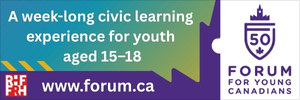The CST Foundation (CST) and the Social Research and Demonstration Corporation (SRDC) released new research designed to better understand the impact of the Federal Canada Learning Bond (CLB) program on Canadian families. Created in 2004, the CLB was designed to kick-start education savings for young Canadians from low-income households; to receive the CLB the eligible children must open a Registered Education Savings Plan ("RESP"). As an expert in education savings, CST identified a number of unanswered questions related to the CLB, and partnered with SRDC to answer them leveraging four Statistics Canada-managed data sources to.
The report seeks to answer three questions:
-
How are CLB funds distributed based on year of birth and family income?
-
What can the data tell us about the impact of the CLB on personal education savings?
-
What can explain the lower take-up of the CLB among rural Canadians?
The key findings from the study include:
-
The CLB is not reaching the lowest income families or children in care. In 2016, only 10% of eligible children living in households with an income under $10,000 and 7% of children and youth in care received the CLB.
-
The CLB does not close the gap in education savings between low- and high-income families. While children born immediately after the CLB took effect were more likely to have an RESP account opened soon after birth compared to those born before, there was no evidence indicating that this change in early education savings specifically influenced account ownership among low-income families. Children in low-income households remained less likely to have an RESP.
-
Children in rural areas are less likely to receive the CLB: 26% of urban children have received the CLB compared to 12% of children from the most rural areas. While there has been no difference in overall awareness of the CLB between urban and rural parents, rural parents are less likely to open an RESP for their children, resulting in lower CLB allocation compared to those in urban areas. When the analysis is controlled for other characteristics (such as parental education and household income), the rural-urban difference is not statistically significant.
-
Access to the CLB varies considerably across Canada. It is highest in Quebec, Ontario, and British Columbia; and lowest in Nunavut, Northwest Territories, Yukon, and Saskatchewan. Newcomers are more likely to receive the CLB compared to second and third-generation children. Inuit, Metis, and First Nations children have the lowest CLB access rates, while Filipino and Chinese children have the highest.
"CST is a passionate advocate for ensuring that all Canadians have the financial resources to pursue post-secondary education" said Sherry MacDonald, President and CEO, CST Foundation. "We are proud of our history as the pioneers of education savings in Canada and will leverage this research to shape our dialogue with Federal and provincial governments. The research underscores the importance of our work to contribute to the public discussion of improving post-secondary education access. We remain dedicated to continuing to advance the goal of ensuring that all Canadians, regardless of their background, have access to important tools such as the Canada Learning Bond."
"The Canada Learning Bond is clearly not universally accessible, and many low-income children miss out on this education funding due to administrative and awareness barriers," said Reuben Ford, Research Director, SRDC. "Although a larger share of children in more recent birth cohorts have an RESP, we have found minimal evidence that initiatives like the CLB have narrowed the gap between RESPs held by lower- and higher-income children. While our findings point to interventions that could increase take up under the existing CLB policy framework, changes to the CLB policy itself may be needed to increase accessibility."
Read the full report here.













